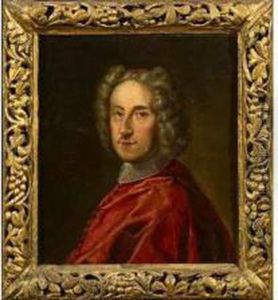Andrea Trevisani Paintings
Andrea Trevisani was an Italian painter of the late Baroque period, born in 1657 in Venice, Italy. He is sometimes referred to as Andrea Trevisano, and his works are often characterized by their vibrant colors and dynamic compositions. Trevisani is particularly known for his religious paintings and his contributions to the grand Venetian tradition of the 17th and 18th centuries.
Trevisani was a student of the painter Antonio Zanchi, who was a prominent figure in Venice during that time. Under Zanchi, Trevisani honed his skills and developed a strong foundation in the techniques of the Venetian school, which emphasized the interplay of light and color. He was influenced by the works of other Venetian painters like Veronese and Tintoretto, as well as the drama and emotion found in the paintings of the Baroque masters, such as Rubens and Caravaggio.
Throughout his career, Andrea Trevisani received numerous commissions for religious works, including altarpieces and frescoes for churches and chapels in Venice and its surroundings. His paintings often depicted scenes from the Bible and the lives of the saints, rendered with a sense of movement and theatricality that was typical of the Baroque aesthetic. Trevisani's work was also marked by his use of rich, deep colors and his ability to convey the textures of fabrics and the softness of flesh.
Despite his success, Andrea Trevisani is not as well-remembered as some of his contemporaries. His work was somewhat overshadowed by the more famous Venetian painters of his time, such as Giovanni Battista Tiepolo. Nevertheless, Trevisani's paintings can still be found in various churches and collections in Italy and beyond, where they continue to be appreciated for their beauty and craftsmanship.
Andrea Trevisani lived and worked in Venice for most of his life, and his contributions to the art of the city are part of its rich cultural heritage. He died in 1743 at the age of 86, leaving behind a legacy as a skilled painter who upheld and advanced the traditions of the Venetian Baroque style.
